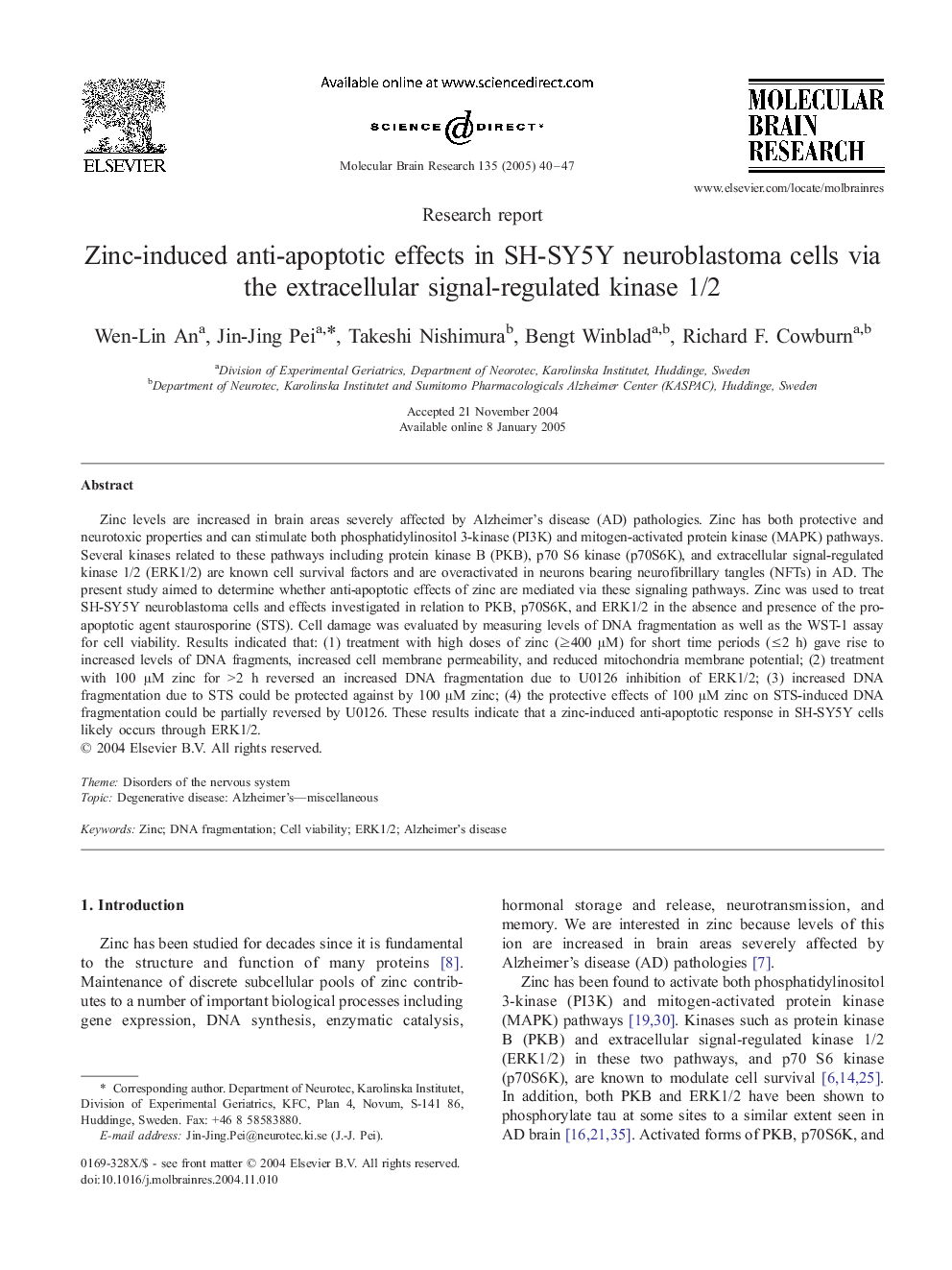| کد مقاله | کد نشریه | سال انتشار | مقاله انگلیسی | نسخه تمام متن |
|---|---|---|---|---|
| 9410665 | 1613319 | 2005 | 8 صفحه PDF | دانلود رایگان |
عنوان انگلیسی مقاله ISI
Zinc-induced anti-apoptotic effects in SH-SY5Y neuroblastoma cells via the extracellular signal-regulated kinase 1/2
دانلود مقاله + سفارش ترجمه
دانلود مقاله ISI انگلیسی
رایگان برای ایرانیان
کلمات کلیدی
موضوعات مرتبط
علوم زیستی و بیوفناوری
علم عصب شناسی
علوم اعصاب سلولی و مولکولی
پیش نمایش صفحه اول مقاله

چکیده انگلیسی
Zinc levels are increased in brain areas severely affected by Alzheimer's disease (AD) pathologies. Zinc has both protective and neurotoxic properties and can stimulate both phosphatidylinositol 3-kinase (PI3K) and mitogen-activated protein kinase (MAPK) pathways. Several kinases related to these pathways including protein kinase B (PKB), p70 S6 kinase (p70S6K), and extracellular signal-regulated kinase 1/2 (ERK1/2) are known cell survival factors and are overactivated in neurons bearing neurofibrillary tangles (NFTs) in AD. The present study aimed to determine whether anti-apoptotic effects of zinc are mediated via these signaling pathways. Zinc was used to treat SH-SY5Y neuroblastoma cells and effects investigated in relation to PKB, p70S6K, and ERK1/2 in the absence and presence of the pro-apoptotic agent staurosporine (STS). Cell damage was evaluated by measuring levels of DNA fragmentation as well as the WST-1 assay for cell viability. Results indicated that: (1) treatment with high doses of zinc (â¥400 μM) for short time periods (â¤2 h) gave rise to increased levels of DNA fragments, increased cell membrane permeability, and reduced mitochondria membrane potential; (2) treatment with 100 μM zinc for >2 h reversed an increased DNA fragmentation due to U0126 inhibition of ERK1/2; (3) increased DNA fragmentation due to STS could be protected against by 100 μM zinc; (4) the protective effects of 100 μM zinc on STS-induced DNA fragmentation could be partially reversed by U0126. These results indicate that a zinc-induced anti-apoptotic response in SH-SY5Y cells likely occurs through ERK1/2.
ناشر
Database: Elsevier - ScienceDirect (ساینس دایرکت)
Journal: Molecular Brain Research - Volume 135, Issues 1â2, 27 April 2005, Pages 40-47
Journal: Molecular Brain Research - Volume 135, Issues 1â2, 27 April 2005, Pages 40-47
نویسندگان
Wen-Lin An, Jin-Jing Pei, Takeshi Nishimura, Bengt Winblad, Richard F. Cowburn,